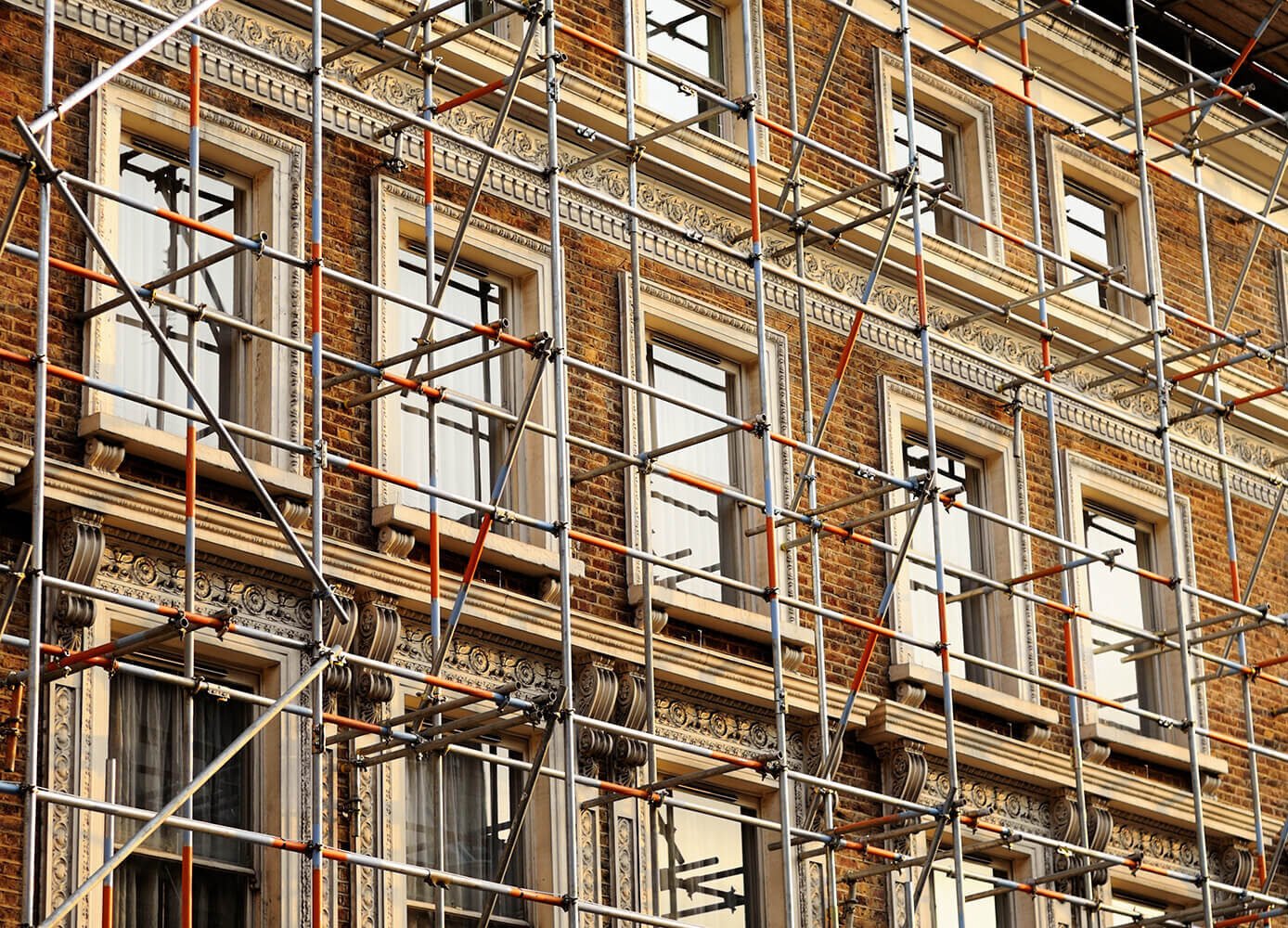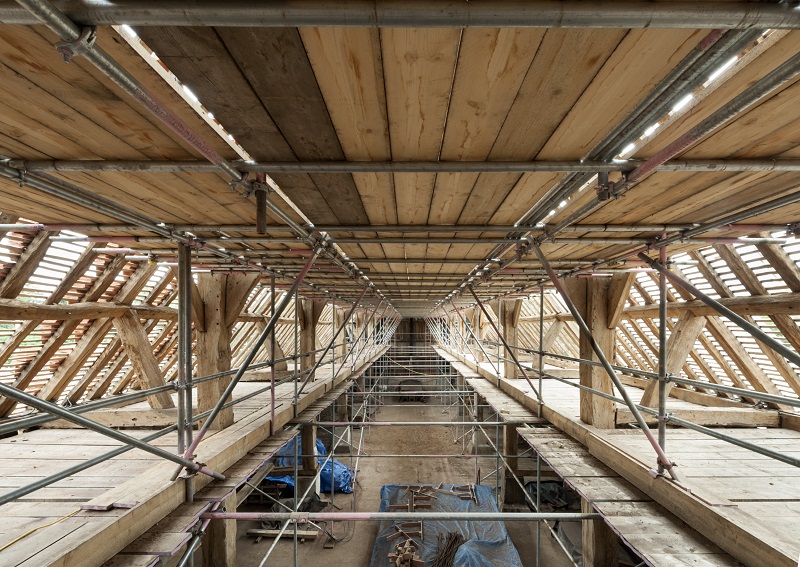Discovering the Various Kinds Of Scaffolding Utilized in Building Tasks
The building sector relies heavily on different types of scaffolding to fulfill certain task demands, each offering distinctive advantages and applications. Standard structure scaffolding provides a strong foundation for general jobs, while put on hold scaffolding is necessary for job on skyscraper frameworks.

Typical Structure Scaffolding
Standard frame scaffolding is among one of the most extensively used methods in the building and construction sector due to its effectiveness and flexibility. This system includes upright and horizontal frameworks that are put together to create a steady platform for employees and materials. The primary parts consist of vertical posts, horizontal journals, and angled braces, which with each other supply a strong framework that can support considerable lots.
Among the key benefits of traditional structure scaffolding is its adaptability to different construction tasks, ranging from household buildings to big business structures. The modular style enables very easy setting up and disassembly, making it effective for both temporary and lasting tasks. Furthermore, the system can be personalized in elevation and width, fitting various structure styles and site problems.
Security is critical in scaffolding applications, and standard frame systems are outfitted with guardrails and toe boards to stop drops and ensure worker defense. Moreover, normal evaluations and adherence to safety policies are critical in keeping the integrity of the scaffold. Generally, traditional structure scaffolding stays a fundamental option in the building and construction sector, offering a reliable platform for labor and boosting total task efficiency

Suspended Scaffolding
Suspended scaffolding provides a distinct solution for construction jobs that require accessibility to elevated surface areas, specifically in circumstances where typical structure scaffolding may be impractical. This sort of scaffolding is typically put on hold from the roofing or upper levels of a framework, making use of a system of platforms, wheels, and ropes to produce a functioning room that can be gotten used to different heights.
Among the key benefits of put on hold scaffolding is its flexibility. It can be easily rearranged or decreased to accommodate adjustments in building demands, making it optimal for jobs such as home window installment, frontage job, and upkeep on skyscrapers. In addition, the minimal impact of put on hold scaffolding enables for better use ground space in city atmospheres, where area is typically limited.
Safety and security is a vital factor to consider in the use of suspended scaffolding. Overall, put on hold scaffolding offers a reliable and efficient remedy for accessing hard-to-reach locations in different building circumstances, enhancing both efficiency and safety on site.
System Scaffolding
System scaffolding, commonly considered as a contemporary service in the scaffolding sector, is composed of pre-engineered components that can be swiftly set up and adapted for different construction projects. Scaffolding. This type of scaffolding is identified by its modular style, which enables adaptability and effectiveness on job sites, fitting various elevations and architectural requirements
Usually made from high-strength steel or light weight aluminum, system scaffolding supplies boosted longevity and stability. The parts consist of upright articles, straight ledgers, and diagonal dental braces, which adjoin safely, ensuring a robust structure. The layout typically includes standardized fittings, streamlining setting up and disassembly processes, therefore lowering labor time and costs.

Rolling Scaffolding
Moving scaffolding is a flexible option to standard set scaffolding, developed for movement and convenience of usage on building and construction sites. This sort of scaffolding contains a platform supported by structures with wheels, allowing employees to easily transfer it as required. The wheelchair attribute considerably improves productivity, as it decreases downtime associated with dismantling and putting together repaired scaffolding.
Normally constructed from light-weight materials such as aluminum or steel, rolling scaffolding provides a sturdy yet mobile service for tasks needing frequent repositioning - Scaffolding. It is specifically advantageous in tasks such as paint, drywall setup, and electrical work, where accessibility to different heights and places is essential
Safety and security is vital in rolling scaffolding design, with attributes such as securing wheels to avoid unintentional activity when in operation, and guardrails to safeguard employees from drops. In addition, many models are flexible in elevation, accommodating various job demands.
Cantilever Scaffolding

The layout of cantilever scaffolding usually includes using brackets or arms anchored to a building or framework, making it possible for the system to extend outward safely. Safety is extremely important; hence, these scaffolds have to be crafted to hold up against different loads and ecological problems. Regular inspection and upkeep are important to make sure structural integrity and employee security.
Cantilever scaffolding is favored for its convenience and effective use space, making it a preferred option in urban environments where room restrictions prevail. Additionally, it helps with easier accessibility to high elevations, inevitably contributing to the total effectiveness of building tasks. Just like advice all scaffolding kinds, proper training and adherence to safety and security criteria are crucial for employees utilizing cantilever scaffolding.
Final Thought
Finally, the varied sorts of scaffolding used in building and construction projects each serve unique objectives tailored to particular website demands. Traditional structure scaffolding offers security, while suspended scaffolding offers adaptability for elevated tasks. System scaffolding helps with quick assembly, and rolling scaffolding boosts flexibility for differing workplace. Cantilever scaffolding effectively deals with obstacles in urban scaffolding english setups. Understanding these scaffolding types is essential for enhancing safety and security and efficiency in building and construction, eventually adding to the effective conclusion of jobs.
Conventional frame scaffolding supplies a durable foundation for basic tasks, while suspended scaffolding is vital for job on skyscraper structures.Rolling scaffolding is a flexible choice to typical fixed scaffolding, designed for movement and simplicity of usage on construction websites. As with all scaffolding kinds, proper training and adherence to safety and security standards are essential for employees utilizing cantilever scaffolding.
Typical frame scaffolding provides security, while suspended scaffolding provides flexibility for elevated jobs. System scaffolding facilitates fast setting up, and rolling scaffolding enhances wheelchair for varying work settings.